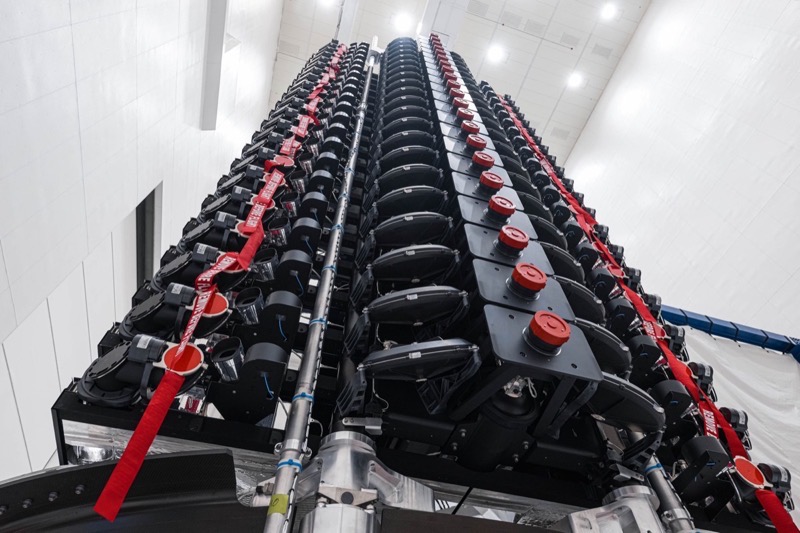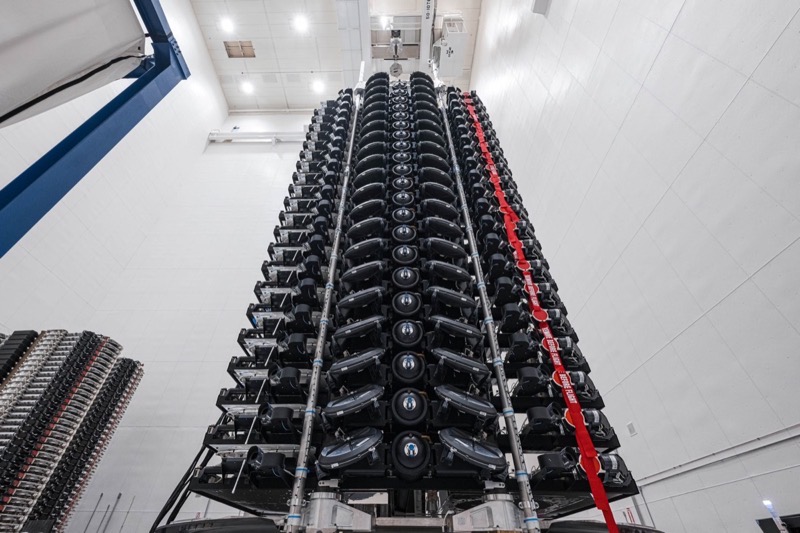
SpaceX Unveils Starlink ‘V2 Mini’ Satellites with ‘Step Forward’ Improvements

SpaceX on Sunday showed a glimpse at its new ‘V2 Mini’ Starlink satellites, which the company calls a “step forward” in capability for the low-Earth orbit satellite internet.
“We call them “V2 Mini”. They represent a step forward in Starlink capability,” said SpaceX, showing two photos today.
“V2 minis include key technologies—such as more powerful phased array antennas and the use of E-band for backhaul—which will allow Starlink to provide ~4x more capacity per satellite than earlier iterations,” said SpaceX.
Images show stacks of these V2 Mini satellites, which are expected to be launched with the company’s Falcon 9 rocket. “The V2 satellites launched on Falcon 9 are a bit smaller, so we affectionately refer to them as “V2 Mini” satellites. But don’t let the name fool you, a V2 Mini satellite has four times the capacity for serving users compared to its earlier counterparts,” said SpaceX.

“This means Starlink can provide more bandwidth with increased reliability and connect millions of more people around the world with high-speed internet,” added SpaceX.
SpaceX added, “among other enhancements, V2 minis are equipped with new argon Hall thrusters for on orbit maneuvering.”
Among other enhancements, V2 minis are equipped with new argon Hall thrusters for on orbit maneuvering pic.twitter.com/4G5nI3zsyX
— SpaceX (@SpaceX) February 26, 2023
“Developed by SpaceX engineers, they have 2.4x the thrust and 1.5x the specific impulse of our first gen thrusters. This will also be the first time ever that argon Hall thrusters are operated in space,” said the company.
The industry standard for Hall effect thrusters is normally the propellant, xenon. Earlier Starlink satellites used the cheaper propellant, krypton.
The following stats are from these new Hall thrusters:
- 170 mN thrust
- 2500 s specific impulse
- 50% total efficiency
- 4.2 kW power
- 2.1 kg mass
- Center mounted cathode
SpaceX also detailed on Sunday how it continues to work with astronomers and the U.S. government on brightness mitigations. “While our V2 Mini satellites are larger than earlier versions, we’re still expecting them to be as dark or darker once the full range of mitigations are implemented and the satellites reach their operational orbit,” said SpaceX.
The company said it came up with dielectric mirror film and dark paint to reduce brightness from its Starlink satellites, and will be “available at cost to other satellite developers and owner/operators.”
Back in December, SpaceX added Starlink Gen2 communications to 60 U.S. gateway sites. The company also filed to build five U.S. Gateway Megasites with E-Band (81-86Ghz TX, 71-76Ghz RX).
Starlink reached over 1 million active subscribers back in December, and its worldwide coverage map continues to increase over time.
To date, SpaceX says it has launched nearly 4,000 Starlink satellites into space, while noting the majority of its 1 million users worldwide are residential customers.

